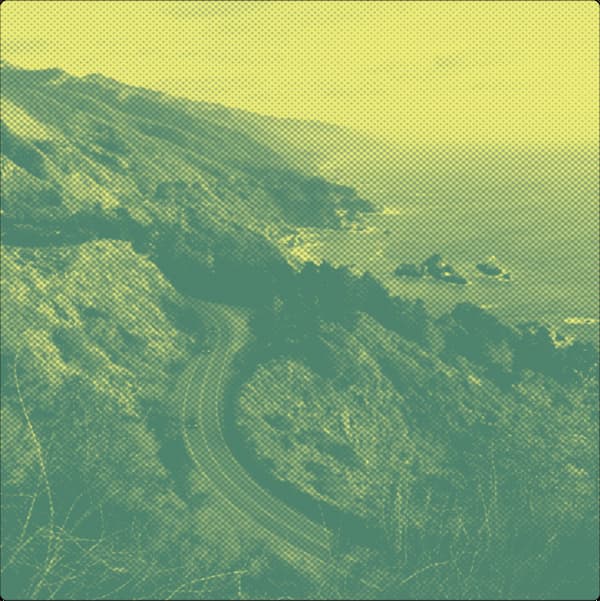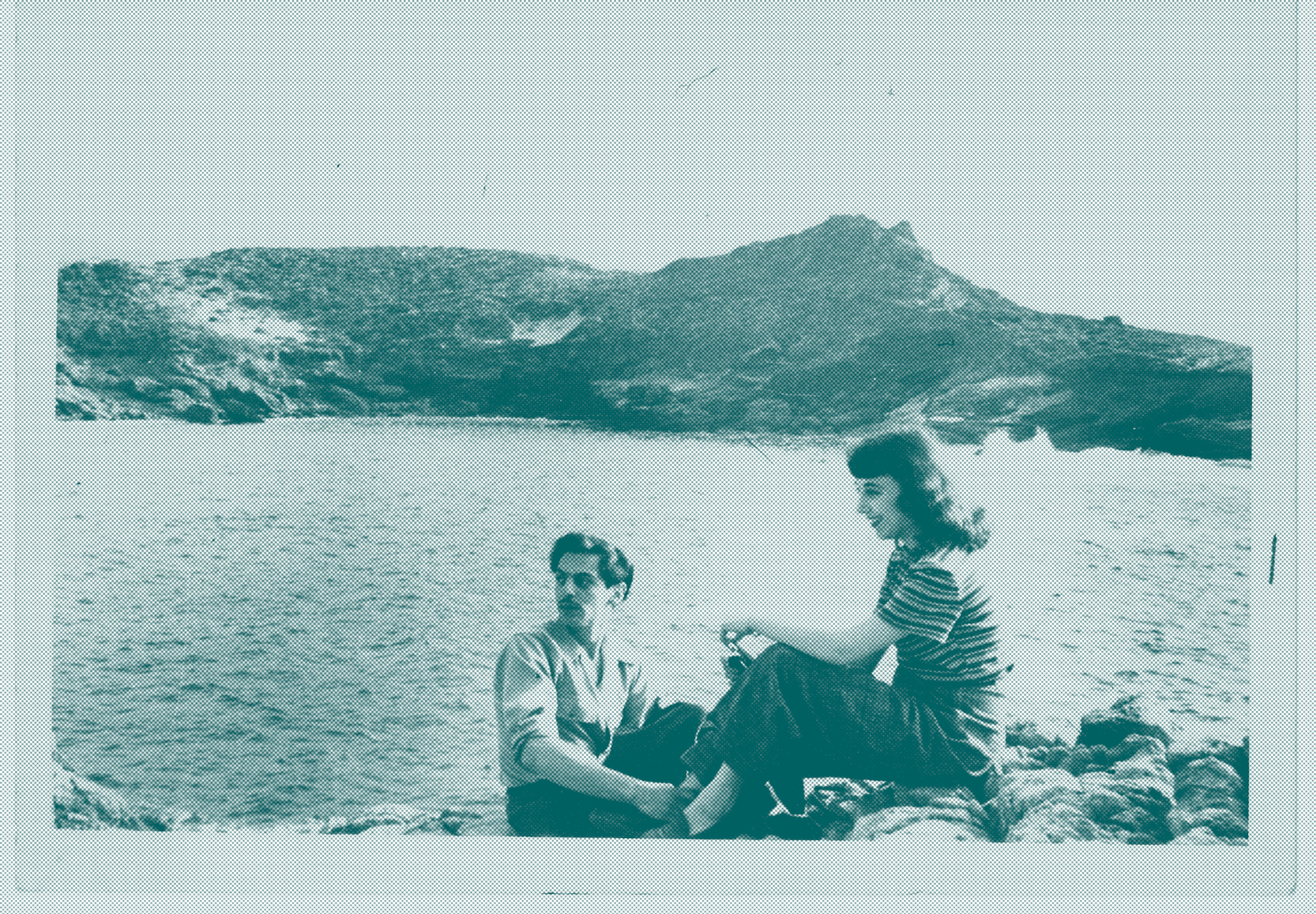By Geeta Dayal
Unearthing Louis and Bebe Barron's Hidden Tapes
The California Treasures of Electronic Music Pioneers
“What the Musician’s Union will make of this I don’t know—but a new Hollywood movie has a score “played” by no human agency. This is MGM’s Forbidden Planet, a startling science fiction story conceived on a positively intellectual level. Where customary music credits would appear, the title card reads, ‘Electronic tonalities by Bebe and Louis Barron.’ I’ve never heard any sounds quite like these…” -Philip K. Scheuer, Los Angeles Times, 1956
For decades, a secret treasure was hidden in a garage in Los Angeles -- a vast storehouse of vintage music recorded by Louis and Bebe Barron in the 1950s and 1960s that was never released to the public. The boxes hold a hidden history of electronic music and vintage Hollywood that could rewire the story of sound in the 20th century as we know it. Hundreds of recordings of music, along with notes and other ephemera belonging to the legendary composer couple were stored in a garage for decades.
The Barrons were most famous for the 1956 score for Forbidden Planet, the first fully electronic score for a movie, but they created many other intriguing pieces of music, many of which have never been heard before. Their first known work, “Heavenly Menagerie” (1951), has never been heard by the public. Louis Barron passed away in 1989, and Bebe Barron in 2006, and much of their work went into storage, in Louis Barron’s second wife’s home. While many electronic composers in the 1950s worked in institutional studios such as WDR in Cologne and GRM in Paris, the Barrons conducted their sonic experiments at home – in New York and later in California.
Thanks to efforts spearheaded by David Barron, one of Louis Barron’s sons, this music will finally be revealed as part of a major collaborative effort with Forgotten Futures, an organization founded by Wouter de Backer, better known as the hit musician Gotye. “I heard Forbidden Planet in my mid-20s and I’m in my early 40s now,” de Backer says. “I was just totally knocked out by it. I really had no reference. It knocked me out, I think, as it does when you hear something so singular. And so unique with the Barrons’ work, that edge of tonality and atonality that they sit on so beautifully. They just ride this wave between those spheres, apart from just how magnetic and texturally compelling their sounds are. It just felt like nothing else I'd ever heard.”
Much of the Barrons’ work predates the era of synthesizers. To this day, their electronic compositions, crafted with an array of homemade circuits, still evoke a sense of the future. “Louis and Bebe Barron were really unique in their approach to create circuits to create electronic sound, rather than building a musical instrument,” says the musicologist Volker Straebel, the current dean of the school of music at CalArts. “They were not interested in creating a synthesizer of any sort. They were not interested in doing anything that could be performed live. But they considered the sounds that they were creating on these circuits a source material that then they later used for their tape collages.”
Digitizing these tape collages is a painstaking endeavor. Fragile recordings are being shuttled in batches to Northern California, where the sound engineer Jessica Thompson is slowly and carefully transferring each reel. “For the most part, these tapes are in incredible condition,” she says. “One big challenge is that there are lots and lots of splices because they were composing with tape and every single one of those splices has to be carefully replaced before I can even hit play.”
But these old recordings, Thompson says, are, for the most part, in excellent shape. “The sound quality is just astounding,” she says. “The tones are so rich, and they just feel so three dimensional. It’s just incredible to hear stuff that is going on like 70 years old that hasn’t been played in decades.”
The Barrons’ music holds great inspiration for movie sound designers. "I am still awestruck when I listen to their work," said Ben Burtt, the legendary sound designer for Star Wars, when I interviewed him at Skywalker Sound in Marin County in California in 2012. "I still cannot fathom it entirely." He remarked that several of the sounds in Star Wars were inspired by Forbidden Planet – not directly, but more of an indirect homage.
The Barrons’ unconventional journey seems to be an improbable path to Hollywood. In the early 1950s, they collaborated with the composer John Cage on his groundbreaking tape work Williams Mix. Later, they did audio work for the experimental filmmaker Maya Deren on The Very Eye of Night (1958) and other films. They were close friends with the writer Anais Nin, and they crafted scores for short films by Nin’s husband Ian Hugo, including Bells of Atlantis (1952) and the stunning Jazz of Lights (1954), which featured Moondog on the streets of Manhattan in his distinctive Viking garb.
The Barrons caught the attention of Dore Schary, the head of production at MGM from 1948 to 1956, who hired them to compose the music for Forbidden Planet. The effort was a huge success, offering mainstream audiences their first extended exposure to electronic music. Regrettably, the Barrons' Hollywood debut failed to spawn a slew of lucrative movie contracts. Their score was labeled 'electronic tonalities' instead of music, to avoid a tangle with the Musicians Union, who felt that their orchestra jobs could be threatened by new electronic music-making machines.
The Barrons became famous for the groundbreaking work they created in the 1950s in New York, in their apartment in Greenwich Village. But before and after that decade in New York, they were in California. According to David Barron, the couple moved to Monterey in 1948, where they spent time with the writer Anais Nin, who became a close friend, before heading to Manhattan in 1950. In the beginning of the 1960s, Louis and Bebe returned to California with their son Adam, but this time they landed in Los Angeles, making their home on Beverly Glen Boulevard. Nin also moved to the area, settling in the relaxed town of Sierra Madre, near Pasadena. The Barrons remained in California for the rest of their lives, though they divorced in 1970, remarried, and went their separate ways. They both continued their creative work. Bebe Barron’s last composition before her death, Mixed Emotions (2000), was recorded with computer-generated sounds made at the University of California at Santa Barbara.
The Barrons spoke about their circuits in enigmatic terms. In a 1997 video interview, Bebe Barron explained:
We thought of our circuits like characters in a script
and used the unfolding of pitches as they came out of the circuit. We didn’t control the pitches at all. . . each circuit we built had lifespans of their own. I just can’t stress that enough, because that was always amazing to me. Once they died, we could never revive them.”
In recent times, many classic film scores have been revisited through remakes, orchestral reinterpretations, and tributes. But recreating the distinctive soundscapes of Forbidden Planet poses a formidable challenge, because no one knows exactly how the sounds were made. Digitizing these tapes holds the key to understanding the mysterious methods used by the Barrons to manipulate sounds with tape machines, and their copious notes and schematics offer new insights into how they constructed their idiosyncratic circuits.
The symphony of the circuits endures in the Barrons’ unique music. It may take another two years to finish the massive job of digitizing the tapes, but the progress is steady, and new releases of the Barrons’ groundbreaking sounds are on the horizon. While electronic music has become commonplace in the several decades since, the 'electronic tonalities' of the Barrons remain unparalleled.
___________
Geeta Dayal is an arts critic and journalist based in Los Angeles who has covered experimental music for the New York Times, The Guardian, Rolling Stone, Wired, NPR, Slate, Artforum, and many other publications.


